|
United States : California
10.5 miles (16.9 km) ESE of Mojave, Kern, CA, USA
Approx. altitude: 779 m
(2555 ft)
([?] maps: Google MapQuest OpenStreetMap topo aerial ConfluenceNavigator)
Antipode: 35°S 62°E
Accuracy: 3 m (9 ft)
Quality:
Click on any of the images for the full-sized picture.
| 35°N 118°W (visit #22) |
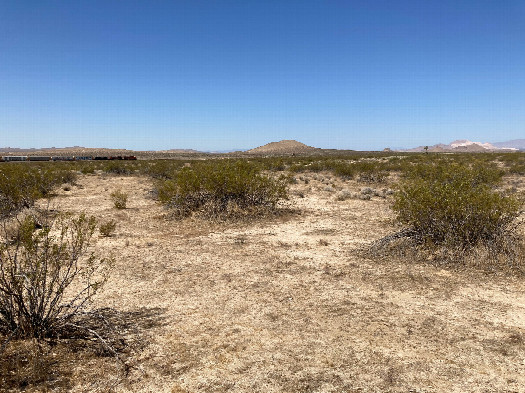 (visited by Michael G) 25-May-2025 -- 35N 118W is conveniently located off CA 58, a major travel route between the southern San Joaquin Valley and the Mojave Desert (a starting point for most travel to the east, via I-15 or I-40). Since I was crossing this segment of highway between Bakersfield and Barstow today, I forwent my typical truck stop rest break in favor of visiting this confluence, which promised a more fulfilling use of my non-driving time. It was mid-morning, and I'd just descended off of the Tehachapi Mountains into the Mojave via CA 58 — the scenery very rapidly transitioned from grassy, parched chaparral to an all-enveloping sand and shrub covered expanse. Once in the desert, it was about 15 minutes to the confluence turn, during a part of which I passively observed the Mojave Airport's aircraft graveyard off to my right. Between that, the nearby Edwards Air Force Base, and China Lake Naval Air Station in northeast Kern County, it's clear that the skies are pretty valuable out here. I also passed the entrance to Hyundai-Kia's testing track facility, just 1.5 mi (2.4 km) before my turn; whether military or commercial, the open space is great for testing things that go fast or explode (or both). The region surrounding the confluence is also harnessed effectively for green energy: large wind farms cover the eastern slopes of the Tehachapis, and I saw a couple solar farms in the short period before reaching my turnoff. As bland and inhospitable as it may appear, I imagine that California is better off for having a region like this. The turn from CA 58 is located at [35.018240, -118.00808], with no apparent street sign (although there is at least a dedicated right turn lane leading up to it). I expected to drive due south along this road no problem, having looked at satellite ahead of time. Upon turning it was immediately obvious that this plan wouldn't work, and thoughts of an 'incomplete' visit flashed through my head: a large, unmarked fence and gate (with barbed wire along its top) blocked passage to the south. As of when I was there, nothing meaningfully identified this enclosure — its purpose, ownership, name, etc. Luck was on my side though: I turned left at this gate and drove only 130 meters east to a dirt road that provided necessary access to the south. This road was bounded on both sides by tall chainlink fences with barbed wire; each enclosure was signed as "Zone 20", "Zone 21", "Zone __", and so on. (Here's a picture of the southeast corner of one of these zones.) Since none of this was present on the most recent satellite pictures (from 2023, as of this writing), it's clearly a recent project. My best guess is that it'll be a solar farm, but who knows. In any case, I continued southbound unimpeded by any gates or signs. Eventually the fencing simply ended and the road continued on toward my goal — I was essentially home free. I followed the dirt track almost exactly a mile (1.6 km) south from where I'd started, before turning left onto a similar (if not ever so slightly rougher) road where I decided to park just east of the T junction. Calling these tracks "roads" feels like an overstatement (see photo), but they were very serviceable: solid (as opposed to sandy), relatively smooth, with only short vegetation growing between the tire tracks. My parking spot was about 700 meters northwest of 35N 118W, a perfect distance to cover for a brief rest stop. I promptly set off in a straight line, easily passing between scattered brush that constituted 98% of the vegetation (very isolated Joshua trees poked out above the shrubs here and there, the other 2%). Just under ten minutes later, I found the "special" gap between the shrubs and zeroed out the GPS — on this warm May morning, I'd arrived at 35N 118W. Skies were hazy and the temperature hovered in the low 80s (~27°C); the afternoon was shaping up to be hot by springtime standards, given it was only 10:30 am. This was my third California confluence and eighth time along the 35th parallel, a very diverse latitude from what I've seen between here and Arkansas. The directional views were decidedly representative of the western Mojave, with a hazy view of the wind turbine-dotted Tehachapi foothills to the west and mostly flat desert in other directions. The spot isn't too far from active railroad tracks, easily visible when looking south. In fact, I caught a westbound freight train in the overview photo! Besides the visible train's rumble, I noticed the distant sound of vehicles on CA 58, unseen but only 1.25 mi/2 km to my north — in contrast with a desert confluence visit I'd completed last week, signs of human activity were plentiful here (and will probably continue to increase, as evidenced by the aforementioned construction project). The closest resident of any kind made their home only a couple meters from 35N 118W, a nice hidey-hole. (Unfortunately, I didn't think to stick my arm inside to find out the type of animal.) I started my brief return to the car after about five minutes on site, crossing paths with some dumped junk along the way (yuck): a less flattering sign of human activity. By way of vehicle, I departed the same way I'd come in, hoping that the construction area didn't magically become active on this Sunday morning (it didn't). I hope future confluence hunters will still be able to access this road; it'll be interesting to hear what becomes of 35N 118W's immediate vicinity. I was happy from my short driving break/confluence hunt and hit the highway feeling geographically satisfied. |
| All pictures |
| #1: Looking southwest at 35N 118W, located in front of the shrub, with a train passing by in the background #2: Looking north from the confluence #3: Looking east #4: Looking south, at some train tracks #5: Looking west, toward the Tehachapi Mountains #6: Zeroes on the GPS! #7: Available housing within 15 meters of 35N 118W #8: Rusty junk spotted along my walk (not cool) #9: The road along which I parked, looking east #10: The corner of one of the unmarked construction areas I drove past, about 1 km northwest of 35N 118W ALL: All pictures on one page |

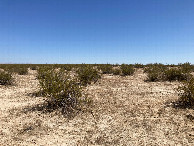
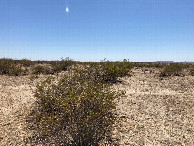
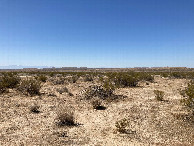
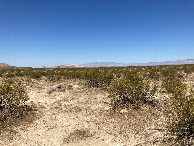
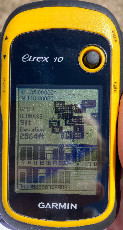
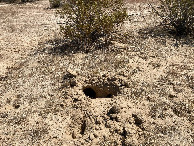
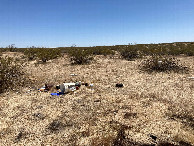
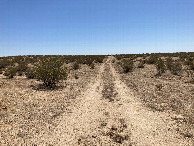
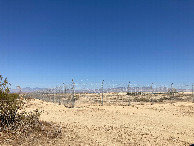
![Visit #21: [08-Jul-21] Visit #21: [08-Jul-21]](/us/ca/n35w118v21/preview.jpg)
![Visit #20: [16-Dec-19] Visit #20: [16-Dec-19]](/us/ca/n35w118v20/preview.jpg)
![Visit #19: [14-May-19] Visit #19: [14-May-19]](/us/ca/n35w118v19/preview.jpg)
![Visit #18: [14-Dec-16] Visit #18: [14-Dec-16]](/us/ca/n35w118v18/preview.jpg)
![Visit #17: [14-Aug-13] Visit #17: [14-Aug-13]](/us/ca/n35w118v17/preview.jpg)
![Visit #16: [19-Jun-10] Visit #16: [19-Jun-10]](/us/ca/n35w118v16/preview.jpg)
![Visit #15: [23-May-10] Visit #15: [23-May-10]](/us/ca/n35w118v15/preview.jpg)
![Visit #14: [21-Apr-10] Visit #14: [21-Apr-10]](/us/ca/n35w118v14/preview.jpg)
![Visit #13: [28-Nov-09] Visit #13: [28-Nov-09]](/us/ca/n35w118v13/preview.jpg)
![Visit #12: [01-Dec-07] Visit #12: [01-Dec-07]](/us/ca/n35w118v12/preview.jpg)
![Visit #10: [12-Oct-06] Visit #10: [12-Oct-06]](/us/ca/n35w118v10/preview.jpg)
![Visit #9: [28-Jan-06] Visit #9: [28-Jan-06]](/us/ca/n35w118v9/preview.jpg)
![Visit #8: [11-Sep-05] Visit #8: [11-Sep-05]](/us/ca/n35w118v8/preview.jpg)
![Visit #7: [26-Feb-05] Visit #7: [26-Feb-05]](/us/ca/n35w118v7/preview.jpg)
![Visit #6: [23-May-03] Visit #6: [23-May-03]](/us/ca/n35w118v6/preview.jpg)
![Visit #5: [13-May-02] Visit #5: [13-May-02]](/us/ca/n35w118v5/preview.jpg)
![Visit #3: [03-Apr-02] Visit #3: [03-Apr-02]](/us/ca/n35w118v3/preview.jpg)
![Visit #4: [30-Mar-02] Visit #4: [30-Mar-02]](/us/ca/n35w118v4/preview.jpg)
![Visit #2: [02-Jan-00] Visit #2: [02-Jan-00]](/us/ca/n35w118v2/preview.jpg)
![Visit #1: [23-Oct-99] Visit #1: [23-Oct-99]](/us/ca/n35w118/preview.jpg)
![Visit #11: [28-Oct-06] Visit #11: [28-Oct-06]](/us/ca/n35w118v11/preview.jpg)